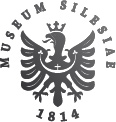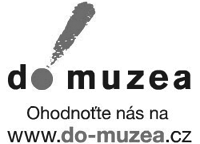ČASOPIS SZM SÉRIE B – VĚDY HISTORICKÉ
LXVI/1–2/2017
OBSAH/CONTENTS
STUDIE/STUDIES
Pavel ŠOPÁK: Olivier markýz Bacquehem a čeští Slezané (K 170. výročí narození a 100. výročí úmrtí rakouského politika) / Olivier Marquis Bacquehem and the Czech Silesians (For the 170th anniversary of the birth and the 100th anniversary of the death of an Austrian politician)
(s.3–14)
Abstract
Olivier Marquis Bacquehem (1847–1917), a well-known Austrian official; during his long political career,
among other things, the Austrian Minister of Commerce and the Minister of the Interior, from 1882 to 1886, he
served as the President of the Austrian Silesia Region. The text recalls the circumstances of the creation of the
Czech grammar school in Opava and the Political and Economic Unity in Opava, as well as the contemporary
assessments of Bacquehem from the Czech side, as captured by the contemporary Czech press.
Keywords: Austrian Silesia, Opava, secondary education, social life in associations, Olivier Marquis Bacquehem
Libor MARTINEK: Joseph von Eichendorff v Sedlnicích a v hudbě / Joseph von Eichendorff in Sedlnice and in music
(s. 15–25)
Abstract
The contribution Joseph von Eichendorff in Sedlnice and in music focuses on the literary work of the romantic
poet Joseph Eichendorff, on his Silesian-Moravian roots, which are, inter alia, connected to the municipalities of
Sedlnice near Nový Jičín, Kravaře or Opava. It introduces his home in Upper Silesia, the village of Lubowice,
where the later poet spent a happy childhood. The beauty and original splendour of the native land is reflected in
many heartfelt poems by Joseph von Eichendorff, which became the inspiration especially for music composers of
the Romantic era. The contribution therefore deals with a wide range of musical settings of this poetry by romantic
European composers, but it does not omit Czech music or world composers either, who continued in this spirit
within the modern musical styles.
Keywords: Joseph von Eichendorff, poetry, music, musical setting, composing, interdisciplinarity
Miroslava SUCHÁNKOVÁ: Kresby a fotografie Jaroslava Zahradníka ve sbírkách Slezského zemského muzea / Jaroslav Zahradník's drawings and photographs from the collections of the Silesian Musem
(s. 27–34)
Abstract
The study points out collection of drawings and photographs gained for the Silesian Museum collection in
the 1950s and 1960s by Jaroslav Zahradník – teacher, journalist and ethnographer, who had been externally
cooperating with the head of the Silesian Museum's Ethnographic Department. The study also approaches his life
and his active role in the cultural field.
Keywords: Jaroslav Zahradník, Silesian Museum, drawings, photography, vernacular architecture, folklore
Pavel Březinský: K činnosti římskokatolické kostelní jednoty sv. Jana a Pavla ve Svinově v letech 1911–1932 / The activities of the Church Unity of St. John and Paul in Svinov from 1911 to 1932
(s. 35–48)
Abstract
The absence of a spiritual house and the absence of a priest in many municipalities had an impact on the
establishment of church unities, which became a means of remedying these shortcomings, not only within the
ecclesiastical administration, but also in the social life of the villages, industrial suburbs or town districts. One of
these villages without a church and a clergyman was, until 1932, Svinov, located near Moravian Ostrava, where
a priest was appointed after the establishment of a separate spiritual administration. The beginning of the whole
story about the construction of the church began to be written in 1911, when the Church Unity of St. John and
Paul was established. Its members became the driving force of the whole project, and these members took care of
the functioning and the organization of the association for many years. Their dream became reality in 1929, when
the Roman-Catholic Temple of Christ the King was completed, and this temple even now presents the result of the
work of the previous generations of Svinov.
Keywords: National Church Unity of St. John and Paul, Svinov village, spiritual house, Moravian Ostrava,
spiritual administration
Lukáš LISNÍK: Společné studium Čechů a Slováků. Příspěvek k významu gymnázia v Jablunkově a rozboru jeho studentstva v letech 1936–1938 / Joint study of Czech and Slovak students. Contribution to the signifikance of the Jablunkov Gymnasium and the analysis of its students in 1936–1938
(s. 49–56)
Abstract
The following contribution deals with the establishment of a grammar school in Jablunkov with regard to the
nationally strained situation of the pre-Munich period. At the same time, it tries to answer the question whether
there was a real need for the establishment of such a type of secondary school in the Jablunkov region. An essential
part of the text consists of a brief territorial, social and cultural (religious) analysis of the newly incoming
students of the institution, which was supposed to help to clarify the importance of the grammar school with the
Czechoslovak language of instruction for the area which was inhabited, according to the latest census in 1930,
mostly by a population of Polish nationality. Thus, the text does not consider this secondary school only as an
institution located in a systematically structured building material equipped with furniture, but, above all, as
a supreme form of secondary education in the submontane area which people bring into being.
Keywords: history of education, national issues, Jablunkov, stratification of the students
Ondřej KOLÁŘ: Problematika válečných hrobů a památníků v agendě opavského landrátu 1938–1945 / the issue of war graves and memorials on the agenda Opava Landrate from 1938 to 1945
(s. 57–71)
Abstract
The study is based on the agenda of the office of the Opava Landrate from the period of Nazi occupation and
follows the approach of the then German administration to the issue of war graves and memorials. Attention is
focused on the approach of the occupation authorities to the memorial sites connected to the symbolism of the
pre-Munich Czechoslovakia and, above all, on the efforts of the authorities to record and maintain the graves of
the victims of both world wars, both of the soldiers and the civilian population.
Keywords: Memorials, war graves, memorial sites, military, Nazism, the region of Opava, genealogy
Miloš ZAPLETAL – Filip DVOŘÁK: Mapování zátěže znečištěným ovzduším na vybrané objekty městského hřbitova v Opavě /Mapping of effects caused by air pollution on selected objects in Municipal Cemetery in Opava
(s. 73–83)
Abstract
The study presents the results of mapping the effects caused by air pollution on materials of sepulchral monuments
in the Municipal Cemetery Opava, especially the evaluation of pollutant effects, climatic parameters and then
modelling the levels of deterioration. The values used in the study come from regional meteorological stations
from the period of 2011–2014. In all the examined materials (steel, copper, bronze, limestone and sandstone), the
exceeding of limits for corrosion were found during the period studied. These materials are exposed to corrosion
risk more than the established tolerance level defined for the cultural heritage monuments. Moreover, a new
strategy for restoration of these monuments was proposed.
Keywords: Funeral architecture – funeral sculpture – sepulchral monuments – Municipal Cemetery Opava – air
pollution impact on cultural monuments – dose response function
Jiří JUCHELKA: Symbolika a rituální význam koně v pravěku s důrazem na období popelnicových polí a starší dobu železnou ve střední Evropě – 1. část / Symbolism and ritual signifikance of horses in prehistory with accent on the Urnfield period and early Iron Age in Central Europe – Part 1
(s. 85–102)
Abstrakt
Daný článek zpracovavá některé dílčí oblasti zapojení koně v rámci náboženských představ v období
popelnicových polí a starší době železné se zevrubným přesahem i do dalších úseků pravěku a raného středověku
počínaje paleolitem a konče příchodem Slovanů na naše území. Kostru předložené práce tvoří kompilace těch
nejzásadnějších archeologických pramenů spojených s koněm. Na ní je pak stavěn tvůrčí rozbor vybraných askpeků
problematiky s autorovým výkladem.
Klíčová slova: kůň, pravěké náboženství, doba popelnicovýchn polí, mladší a pozdní doba bronzová, halštat
Jiří KRÁTKÝ: K dílu varhanářů Staudingerů z Andělské Hory / To work of pipe organ builders Staundinger from Andělská Hora
(s. 103–126)
Abstract
One of the most important pipe organ manufactory in the period of late baroque was settled in Andělská Hora near
Bruntál. From the midle of 18th century till 1830s there were produced pipe organs, managed by the Staudinger
family. Whereas we are quite well informed about their lives thanks to present literature, there were no extant organs
from the most important member of builders – Joseph Sebastian Staudinger. The study concentrates on still existing
pipe organs built by this manufacture.
Keywords: pipe organs, Silesia, Staudinger, Andělská Hora, structural specifics, organ building
Romana ROSOVÁ: Další příspěvek k historii kostela sv. Kateřiny v Tamovicích / Another contribution to the history of the st. Catharina church in Tamovice
(s. 127–139)
Abstract
The study focuses on history and construction development of the church of st. Catharine in vanished village
Tamovice (today Štramberk) on the basis of written sources and results of partial dendrochronological survey.
The church was built at the turn of the 19th and 20th century, the roof of the presbytery was dendrochronological
dated to the years 1440–1442. This medieval stone church was later (in the second half of 16th century and the
beginning of 17th century) rebuild and replenish with new wooden elements such as tower, oratory or sheltered
gallery around the nave. In 1680s probably the second, baroque phase of reconstruction took place. The study
follows also documented adaptations in 19th and 20th century, especially the reconstruction in 1949–1950.
Keywords: church, building development, dendrochronology, Tamovice, perished village, medieval history,
archival research
Michaela HARVÁNKOVÁ: Z deníků Josefíny a Leopolda Berchtoldových Cannes 1878 / From the diares of Josephine and Leopold Berchtold – Cannes 1878
(s. 141–148)
Abstrakt
Příspěvek vychází z cestovních a osobních deníků dospívajících sourozenců Josefíny a Leopolda Berchtoldových
popisujících cestu do Cannes, kterou společně s rodiči a vychovateli podnikli na počátku roku 1878. Na vybraných
pasážích můžeme pozorovat, jak cesta probíhala, co bylo její náplní a jaký byl její přínos pro mladé aristokraty.
Rozbor deníků současně ukazuje, jak mohou tyto rukopisné prameny pomoci badatelům utvářet obraz každodenního
života šlechtické rodiny Berchtoldů.
Keywords: Leopold Berchtold, Josefín
MATERIÁLIE/MATERIALS
Lucie AUGUSTINKOVÁ – Libor KOVÁŘ: Portrét preláta z Fulneka
(s. 149–151)
JUBILEA/ANNIVERSARY
(s. 152–163)
Muzejník a vlastivědný pracovník Gustav Beck. Připomínka k 80. výročí úmrtí (Marta Šopáková), Muzeolog a etnograf Josef Beneš – 100 let od narození (Otakar Kirsch), Alois Kacíř a zemědělské muzeum v Opavě po roce 1945. Jubilejní vzpomínka k 120 výročí narození (Pavel Šopák).
RECENZE/REVIEWS
(s. 164–174)
Ilona MATEJKO-PETERKA a kolektiv, Země a její pán. Struktury vlády a její projevy na území Rakouského Slezska do konce první světové války. (Romana Rosová), Kolektiv autorů: Neklidné století. České Slezsko a Ostravsko od první světové války do listopadu '89. (Michaela Závodná), Josef LADA, Opavská kulturní organizace, Dům umění, Opava, 15. 3. 2017–7. 5. 2017 (Tomáš Kolich), Peter MORÉE – Jiří PIŠKULA, Nejpokrokovější církevní pracovník": Protestantské církve a Josef Lukl Hromádka v letech 1945–1969 (Lukáš Vaculík), František ŠVABENICKÝ (ed.), Třetí rozměr staré Opavy (Jaromíra Knapíková), Tomáš SKALÍK, Opavské sochy: tiché dominanty veřejného prostoru. III. Umění opavských hřbitovů. (Branislav Dorko), Libor MARTINEK, Wladyslaw Sikora (monografie) (Jiří Šíl), Marie GAWRECKÁ, Michal VALEČEK (eds.), Jak se žilo v Opavě před velkou válkou a v době první republiky. Paměti opavského rodáka Stanislava Petříka (Jaromíra Knapíková).
KRONIKA/CHRONICLE
(s. 175–183)
V novém světě. Podmínky modernity 1917–1927 (Pavel Šopák), Výstava František Josef I. v Olomouci, Vlastivědné muzeum Olomouc (Ondřej Kolář), 140 let Matice opavské (Ondřej Kolář), Seminář Historické kovové předměty a jejich konzervování-restaurování se zaměřením na jemnou mechaniku a leštěné povrchy (Oldřich Schejbal), Aktuální trendy v muzejní prezentaci a edukaci Slezské zemské muzeum, Opava 4.–5. května 2017 (Jana Nevřelová – Jitka Pešková), Seminář českých a německých historiků v Městském archivu v Bamberku (Maxmilian Kubný), Konference konzervátorů-restaurátorů 2017 (Oldřich Schejbal), Konference Textil v muzeu (Martina Polomíková).
Poslední aktualizace článku: 19.06.2020
Vytisknout celý článek







